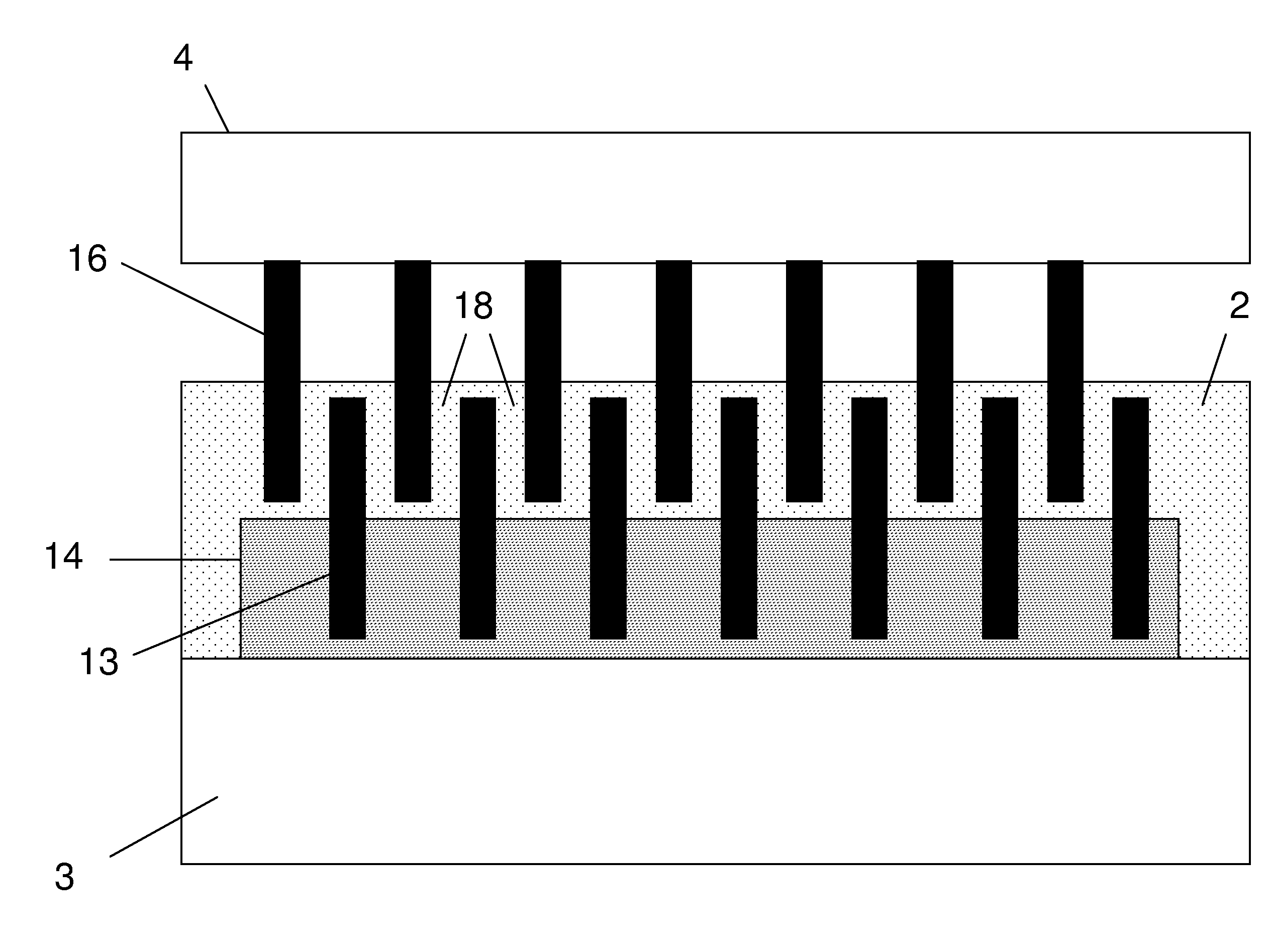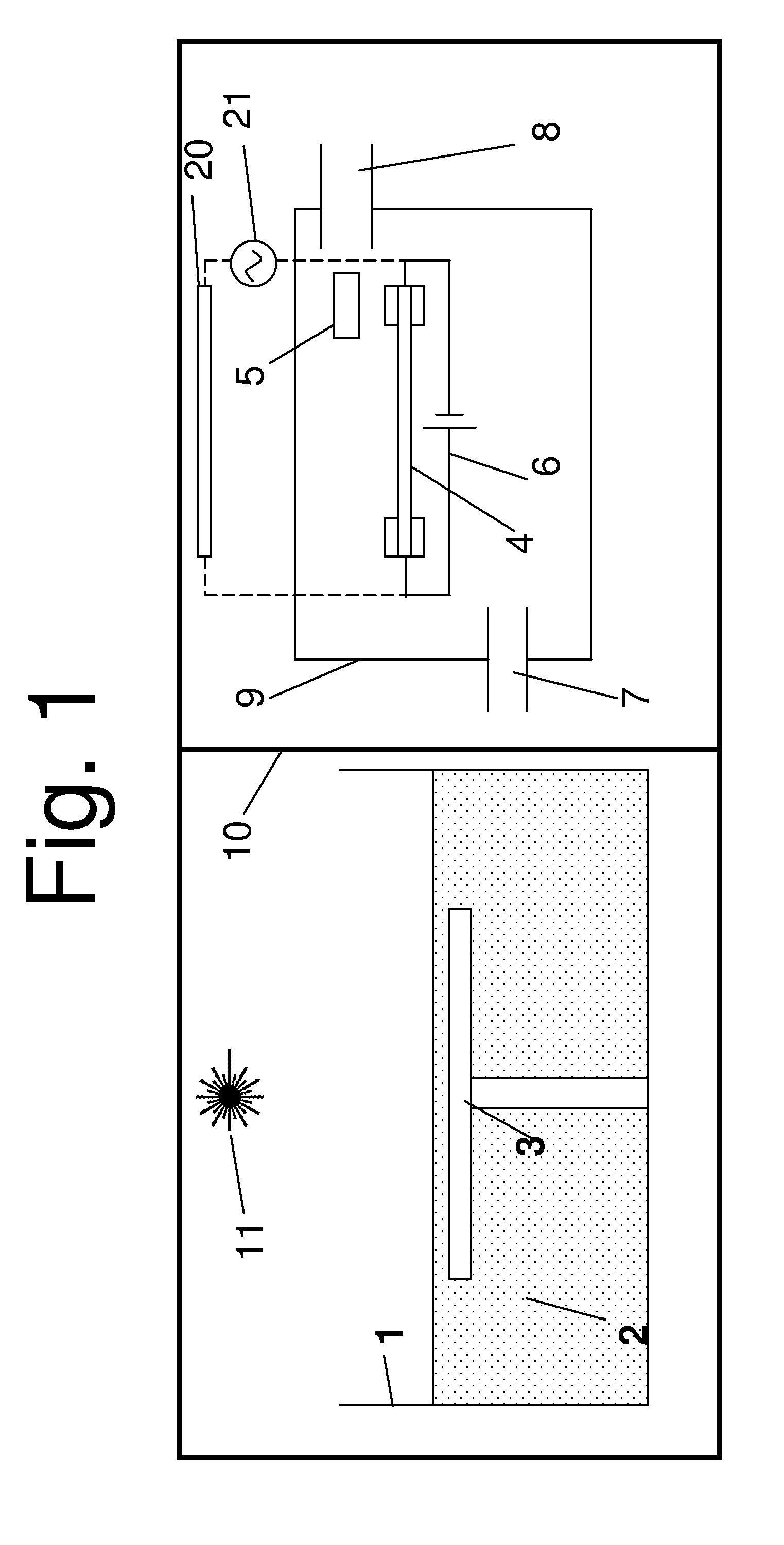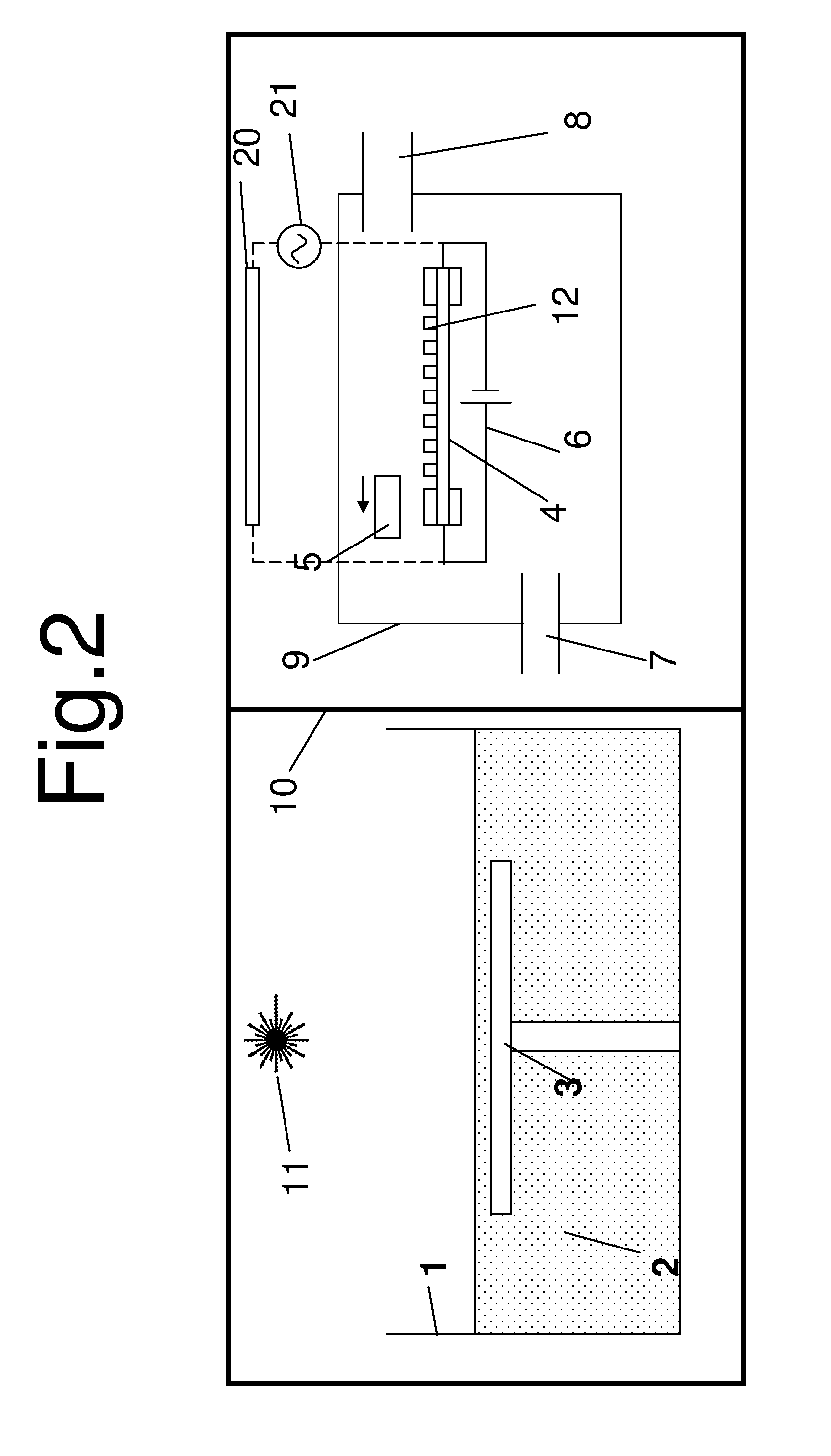Method and apparatus for manufacturing a composite material
a composite material and manufacturing method technology, applied in the field of composite material manufacturing methods and equipment, can solve the problems of inability to provide a continuous link from one side of the composite to the other, and the technique does not address the fundamental challenges of producing nano-only composite structures
- Summary
- Abstract
- Description
- Claims
- Application Information
AI Technical Summary
Benefits of technology
Problems solved by technology
Method used
Image
Examples
Embodiment Construction
)
[0057]FIG. 1 is a schematic diagram showing an additive layer manufacturing (ALM) chamber on the left hand side of the figure, and a chemical vapour deposition-carbon nanotube (CVD-CNT) growth chamber on the right hand side. These two chambers are separated by a door 10.
[0058]The ALM chamber comprises a vat 1 containing an un-cured liquid photo curing resin 2. A build platform 3 is mounted in the vat 1 and can be moved up and down as required.
[0059]The CVD-CNT chamber contains a silicon transfer body 4 which is connected to an electrical heating circuit 6. The chamber has a gas input 7, a gas output 8 and a door 9.
[0060]Referring to FIG. 2, a catalyst deposition system 5 deposits catalyst material 12 onto the silicon transfer body 4 in a predefined shape, pattern and density. The system 5 may comprise a printing head which sprays an array of colloid drops onto the transfer body 4, and as the colloid evaporates, metal catalyst particles suspended in the colloid drops are deposited. ...
PUM
| Property | Measurement | Unit |
|---|---|---|
| angle | aaaaa | aaaaa |
| temperatures | aaaaa | aaaaa |
| aspect ratio | aaaaa | aaaaa |
Abstract
Description
Claims
Application Information
 Login to View More
Login to View More - R&D
- Intellectual Property
- Life Sciences
- Materials
- Tech Scout
- Unparalleled Data Quality
- Higher Quality Content
- 60% Fewer Hallucinations
Browse by: Latest US Patents, China's latest patents, Technical Efficacy Thesaurus, Application Domain, Technology Topic, Popular Technical Reports.
© 2025 PatSnap. All rights reserved.Legal|Privacy policy|Modern Slavery Act Transparency Statement|Sitemap|About US| Contact US: help@patsnap.com



